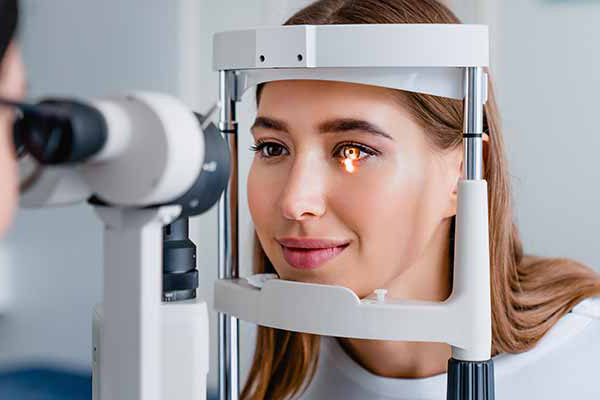Andalusia Eye Center: Premier Services for Vision Improvement
Andalusia Eye Center: Premier Services for Vision Improvement
Blog Article
The Total Break Down of Retina Disorders and How They Affect Your Vision
Retina problems can disrupt this delicate process, leading to a variety of vision problems. By discovering the makeup of the retina, usual problems that can impact it, their causes, signs, and available treatment options, we can acquire useful understandings right into preserving and securing our vision.
Introduction of Retina Anatomy
The complex structure of the retina offers as the foundation for aesthetic understanding and plays a critical duty in the procedure of converting light into neural signals for the brain to translate. Situated at the rear of the eye, the retina consists of a number of layers that work together perfectly to promote vision. At the core of this complicated structure are photoreceptor cells called rods and cones. Rods are accountable for vision in low light conditions and discovering movement, while cones are essential for shade vision and comprehensive aesthetic skill. These photoreceptor cells convert light energy into electric signals that are then refined by various other retinal cells, such as bipolar cells and ganglion cells. The bipolar cells transfer signals from the photoreceptors to the ganglion cells, which in turn send these signals with the optic nerve to the mind for visual processing. Comprehending the complex makeup of the retina is basic in understanding how vision functions and exactly how different retina conditions can impact aesthetic assumption.

Common Retina Disorders
Retina problems incorporate a series of conditions that affect the intricate framework of the eye responsible for aesthetic processing. One usual condition is age-related macular degeneration (AMD), a leading reason for vision loss in individuals over 50. AMD influences the macula, a component of the retina essential for sharp central vision, resulting in blurriness or dead spots in the central visual area.
An additional prevalent problem is diabetic retinopathy, happening in people with diabetic issues. High blood sugar level degrees harm the blood vessels in the retina, bring about vision problems or loss of sight if left without treatment. Retinal detachment is a major disorder where the retina retreats from its regular position, creating an abrupt start of drifters, flashes of light, or loss of vision in a curtain-like pattern.
Lastly, retinitis pigmentosa is a team of congenital diseases that cause the breakdown and loss of cells in the retina, causing night blindness and a steady constricting of the visual field - cardiologist andalusia. Recognizing these common retina conditions is essential in maintaining vision and looking for timely clinical intervention
Reasons For Retina Disorders
Numerous factors add to the advancement of retina problems, consisting of genetic proneness, way of life choices, and underlying wellness conditions. Hereditary tendencies play a significant function in several retina conditions, such as retinitis pigmentosa and macular degeneration. People with a family background of these conditions go to a higher danger of developing them because of inherited genetic anomalies affecting the retina's feature.
Lifestyle options can also affect retina wellness. Cigarette smoking, as an example, has been connected to a boosted danger of age-related macular deterioration, a typical retina problem that can result find out in vision loss. Poor nutritional behaviors lacking necessary nutrients like vitamins A, C, and E, in addition to omega-3 fatty acids, can likewise contribute to the advancement of retina problems.
Diabetic retinopathy, a complication of diabetes, can cause damage to the blood vessels in the retina, leading to vision problems. High blood pressure can result in hypertensive retinopathy, where high blood stress influences the blood additional hints vessels in the retina, possibly creating vision troubles.
Signs And Symptoms and Medical Diagnosis
Offered the substantial effect that triggers such as hereditary predispositions, way of life choices, and underlying health problems can carry the advancement of retina conditions, it is vital to acknowledge the symptoms and make use of reliable analysis techniques for early discovery and monitoring. Signs of retina disorders can differ relying on the certain condition but may include blurred or misshaped vision, the unexpected appearance of floaters or flashes of light, a dark place in the facility of your vision, or a gradual loss of main vision. If you experience any one of these signs, it is critical to look for instant medical focus.
Detecting retina conditions commonly entails a thorough eye assessment, which may consist of visual skill tests, dilated eye tests, optical coherence tomography (OCT), fluorescein angiography, or various other imaging tests. Your eye care service provider might likewise ask about your clinical history and any kind of family background of eye conditions. Early detection with regular eye examinations is key to avoid vision loss and managing retina conditions effectively. If identified with a retina problem, your doctor will deal with you to establish a personalized treatment strategy to preserve your vision.

Treatment Options and Management
Therapy choices for retina problems vary depending on the underlying cause and intensity of the problem. In instances of retinal detachment, medical treatments such as vitrectomy or scleral fastening may be required to prevent and reattach the retina vision loss.
In diabetic person retinopathy, handling blood glucose levels is crucial to avoid additional damage to the blood vessels in the retina. In addition, therapies like laser surgical treatment or shots may be suggested to minimize swelling and protect against vision loss. Regular eye exams and early detection of retina problems are vital for effective management and treatment end results. Individuals with retina problems should function carefully with their eye doctor to develop an individualized treatment strategy that addresses their particular requirements and helps maintain optimal visual function.
Verdict
In conclusion, recognizing the anatomy of the retina, typical conditions, causes, signs and symptoms, medical diagnosis, and therapy alternatives is critical in handling vision problems. Retina conditions can dramatically affect vision and lifestyle, making very early detection and proper management necessary. By staying educated about these problems and looking for appropriate clinical care, people can much better preserve their vision and preserve total eye health and wellness.

Comprehending the complex anatomy of the retina article source is essential in understanding how vision features and exactly how numerous retina conditions can influence aesthetic perception.
Retinal detachment is a severe disorder where the retina pulls away from its normal setting, triggering an abrupt onset of advances, flashes of light, or loss of vision in a curtain-like pattern.
Signs of retina disorders can vary depending on the specific problem however might consist of obscured or misshaped vision, the abrupt look of advances or flashes of light, a dark place in the center of your vision, or a gradual loss of central vision.In verdict, understanding the anatomy of the retina, usual disorders, triggers, signs and symptoms, medical diagnosis, and therapy choices is important in managing vision disabilities.
Report this page